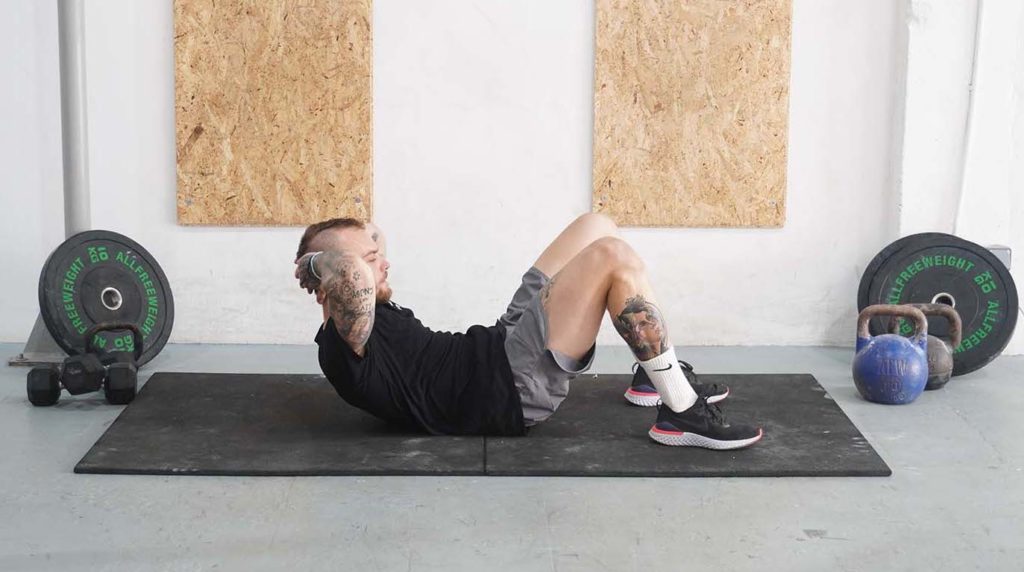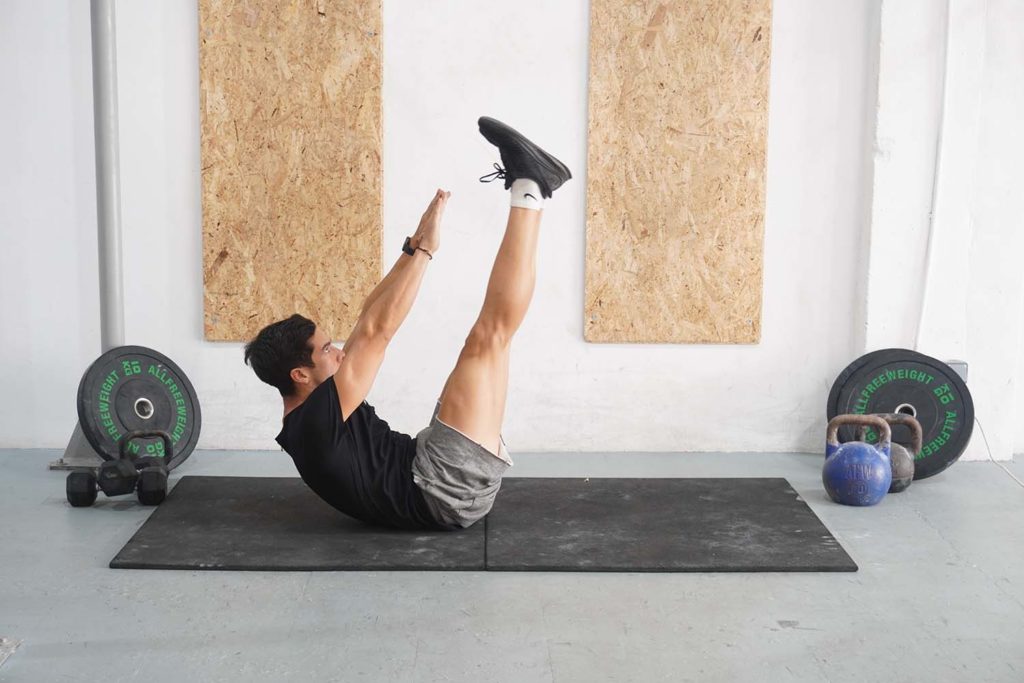Benefits of the Decline Crunch
The rectus abdominis is like any other muscle in the body and responds to training by growing and getting stronger. But, unlike many other muscles in the body, developing the abs tends to be more challenging because we use the muscle non-stop during the day.
Classic crunches, lying knee raises, and other ab exercises work well for beginners. But everyone beyond that stage needs more challenging activities to force their abs to develop further.
As its name suggests, the decline crunch is an exercise you perform on a decline bench. The variation is challenging and more beneficial than traditional ab movements because of your torso position. Doing crunches on a decline bench forces your abs to work extra hard in raising your torso, leading to more strength, stability, and athleticism.
We recommend including the decline crunch near the end of your traditional workouts or as one of the first exercises in an ab routine.
How to do a Decline Crunch
- Put a bench in a decline position. Start at around 30 degrees to see how it feels and go from there.
- Lie on the bench and secure your legs on the knee and ankle pads.
- With your back against the bench, bring your hands to the sides of your head and take a breath.
- Initiate the crunch by engaging your abs and using them to lift your torso toward your thighs.
- Raise your torso as you simultaneously crunch in for maximum abdominal engagement. Your chest should come near to your knees at the top position.
- Hold the top position for a moment and slowly lower your torso back to the starting position.
- Take another breath and repeat.
What muscles does the decline crunch activate?
The primary muscle that works during a decline crunch is the rectus abdominis, which runs from just below the ribcage to the hip bone. One of the muscle’s primary functions is to draw the chest closer to the hips (1). As we engage our abs, the muscle produces the force we need to crunch from a decline position.
The transverse abdominis, obliques, and erector spinae also play a role during a decline crunch. Their primary function is to flex isometrically and offer torso support.
Difference between the Decline Crunch and Decline Sit-up
Sit-ups and crunches might seem like the same exercise, but they are different. The goal with crunches is to engage your abs and raise your upper back a few inches off the bench. In contrast, sit-ups have you lift your torso entirely off the bench and into an upright position.
Both exercises are similar and train many of the same muscles, but crunches tend to be the better option for most people. The movement is more productive because it reinforces abdominal activation. You engage your abs, drawing your chest closer to your hips and lifting your shoulder blades off the bench.
Sit-ups have a similar objective, but the exercise also involves your hip flexors (rectus femoris, iliacus, sartorius, pectineus, and psoas) to raise your torso in an upright position. Plus, there is barely any tension on your abs at the top of each repetition, making the exercise less effective for core development.
Crunches are also better because they are less dynamic and keep constant tension on your rectus abdominis. Sit-ups offer a more extended range of motion, placing more stress on your spine and preventing the abs from doing most of the work.
Variations and Modifications of the Decline Crunch
1. Regular Crunch

A regular crunch is one beginner-friendly ab exercise you can do without any equipment. The objective is to lie on your back, bend your knees, and place your feet flat on the floor. Once in position, engage your abs, take a breath, and crunch to raise your shoulder blades off the floor.
2. Decline Twisting Crunch
Decline twisting crunches are a neat variation that emphasizes your internal and external obliques. The objective is to crunch as you usually would, but instead of going straight up and down, you include a slight torso twist as you move up. Doing so forces your obliques to work extra hard.
3. Weighted Decline Crunch
Weighted decline crunches are a more advanced variation that allows you to overload your abs better. All you have to do is set yourself on a decline bench, grab a weight (be it a dumbbell or weight plate), and perform the movement.
Mistakes to Avoid
The first common mistake with the decline crunch is raising your torso too much. As discussed above, the objective is to engage your abs and crunch your torso, lifting your shoulder blades a few inches off the bench. In contrast, raising your torso to an upright position is a sit-up. Doing so is by no means a fatal mistake but get clear on which movement you want to be doing.
Another common mistake with the decline crunch is arching your lower back. Doing so prevents you from engaging your abs and instead forces you to use your hip flexors to raise and lower your torso. Avoid the mistake by keeping your lower back in contact with the bench and initiating each repetition by engaging your abs.
The third error to watch out for is performing repetitions too quickly. While doing so might lead to more total repetitions, it doesn’t necessarily lead to better results. It’s much better to perform repetitions slowly and contract your abs well on every repetition. Sure, you might do fewer reps that way, but the growth stimulus will be much stronger.
Similar Exercises to the Decline Crunch
V Up

V ups are an effective bodyweight exercise that strengthens your lower body, abs, back, and shoulders. Unlike most ab exercises, V ups force you to raise your torso and legs to the ceiling simultaneously. As a result, each repetition is more challenging, and the movement leads to more strength, stability, and improved athleticism.
Cable Crunch
Cable crunches are another effective ab exercise that offers excellent flexibility for trainees. The cable crunch is great because you can adjust the resistance based on your ab strength. You can start with a light load, learn how to perform the movement, and gradually increase the resistance as you build midsection strength.
Hanging Knee Raises

Hanging knee raises are another functional ab exercise (2). Unlike other movements, the hanging knee raise forces your entire core to work extra hard and keep you from swinging back and forth. Your abs produce force to lift your knees, and your forearms work hard for you to grip the bar and hang as you do repetitions.

